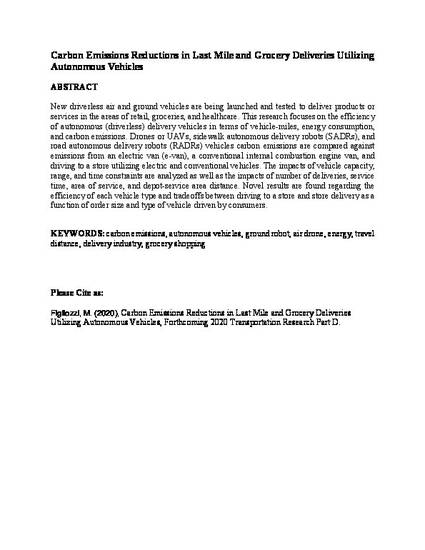
- Congestion mitigation,
- Emissions reductions,
- Vehicle emissions,
- Traffic management
New driverless air and ground vehicles are being launched and tested to deliver products or services in the areas of retail, groceries, and healthcare. This research focuses on the efficiency of autonomous (driverless) delivery vehicles in terms of vehicle-miles, energy consumption, and carbon emissions. Drones or UAVs, sidewalk autonomous delivery robots (SADRs), and road autonomous delivery robots (RADRs) vehicles carbon emissions are compared against emissions from an electric van (e-van), a conventional internal combustion engine van, and driving to a store utilizing electric and conventional vehicles. The impacts of vehicle capacity, range, and time constraints are analyzed as well as the impacts of number of deliveries, service time, area of service, and depot-service area distance. Novel results are found regarding the efficiency of each vehicle type and tradeoffs between driving to a store and store delivery as a function of order size and type of vehicle driven by consumers.

This is the author’s version of a work. Changes resulting from the publishing process, such as peer review, editing, corrections, structural formatting, and other quality control mechanisms may not be reflected in this document.